THE BEST GRAVEL SHOES

Summary: In my search for the best gravel shoes, my fellow testers and I evaluated several enthusiast-level models designed specifically for gravel riding along with top-end and lower-priced mountain bike shoes all with dial closure systems.
Shimano’s RX801, which currently sells for US$275/£160/€165 and is available here, here, here, here, and here from stores I recommend, stood out as the best of the dedicated gravel shoes. Their XC902 mountain bike shoes, US$430/£250/€280 here, here, here, and here. were the best performers for both gravel and mountain biking. The lower-priced mountain bike shoes we tested didn’t perform as well as the gravel bike shoes, and I’d only suggest them for recreational riders.
Yes, gravel shoes are a thing. They are designed for the combination of performance and comfort needed for gravel riding and, in most cases, are different enough from the shoes already sold for road or mountain biking to consider on their own.
While you wouldn’t want to use your road shoes and pedals on any gravel ride where you’d have to put a foot down, you can get mountain bike shoes that are also great on gravel. Others are not as well suited or could be more than you need or want to spend unless you do a fair bit of mountain biking and or cyclocross in addition to riding gravel.
If you’re like other road cycling enthusiasts who’ve taken to riding gravel and me, your mountain bike shoes may be as old as the last mountain or CX bike you bought and aren’t really great on gravel. Or, as a pure roadie, you may have never even owned a pair of MTB shoes in your adult life.
Fortunately, my fellow testers Nate, Miles, and I span the gamut of off-road gravel, mountain, and cyclocross riding experience in addition to our roadie jam. We’ve had a chance to evaluate the performance and value that some of the best gravel and mountain bike shoes offer for gravel riding.
That, along with my comparisons and recommendations, is what this review is all about.

Related Reviews
The Best Road Cycling Shoes
The Best Gravel Wheels I’ve Tested
Gravel Riding Techniques for Roadies
WHAT YOU NEED TO KNOW ABOUT GRAVEL SHOES
Click any headline to go directly to that part of the post to read about it.
Find what you're looking for at In The Know Cycling's Know's Shop
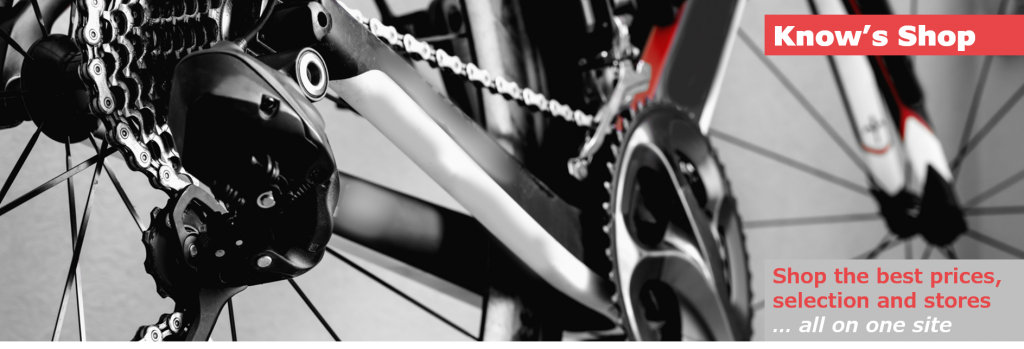
- Compare prices on in-stock cycling gear at 15 of my top-ranked stores
- Choose from over 75,000 bikes, wheels, components, clothing, electronics, and other kit
- Save money and time while supporting the site when you buy at a store after clicking on a link
HERE’S WHAT IS DIFFERENT ABOUT GRAVEL BIKE SHOES
Generally speaking, gravel rides are longer, more relaxed, less technical, and demand less from your shoes than cross country (XC) and other types of mountain biking or cyclo-cross (CX) racing.
While there may be exceptions, that’s the case regardless of how demanding the gravel riding or racing events are that you plan when compared to a similar, competitive level of XC or CX riding and racing.
With that in mind, the best gravel shoes differ from the best mountain bike shoes in the three areas that matter most when evaluating them.
Performance – The most rigid gravel bike shoes will have carbon outsole stiffness levels of 90% to 95% of the best mountain bike shoes. Since rock strikes are less a part of gravel riding than they are while mountain biking, even the best gravel shoes will also have smaller protective bumpers than what you get with mountain bike shoes.
While the best of both shoes use rubber or rubber-like grip pads on the outsole, the “lugs” or tread patterns on the two styles of shoes will often be different. Gravel bike shoes are designed to quickly shed mud and small gravel, while mountain bike shoes aim to better grip rocks you may have to climb on a trail or the wet and frozen turf when CX riding.
Most, though not all, of the better gravel shoes, will have front lugs that you can replace with spikes for CX riding and will also work for less technical MTB riding.
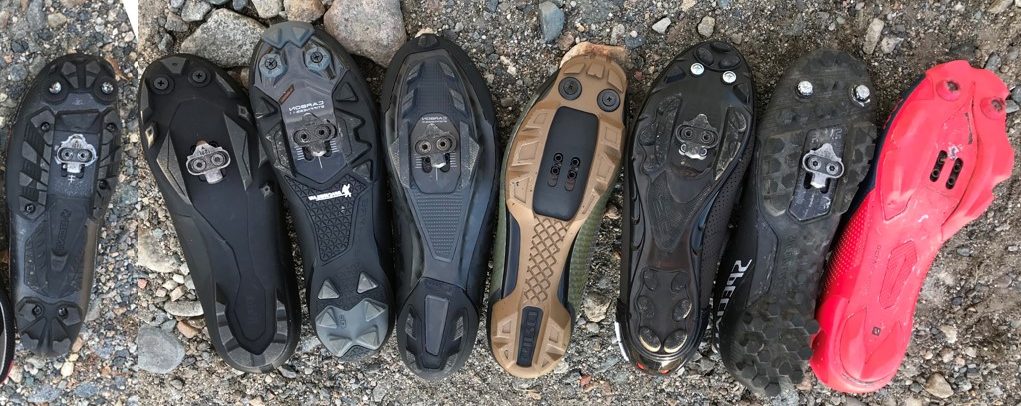
L to R: Bont Vaypor G, Fizik Terra X5, Shimano XC9, Shimano RX8, Giro Sector, Sidi Gravel MTB, Specialized Recon 3.0, Bontrager XXX
Comfort – The current crop of purpose-built gravel shoes are designed to be more comfortable for a long day on the groad than a typical MTB shoe. Some have more padding, a wider “last” that defines the shape and fit of the shoe, or only one BOA closure on even top-of-the-line gravel bike shoes.
Along with this, the best gravel shoes are also made to be more walkable than either a top-end road or MTB shoe. They accomplish this by putting a little flex between the forefoot and toe box that allows your foot to bend a little more naturally when walking around. I don’t know that I want to do a lot of walking when I’m out on a gravel ride, but sometimes you have to hike around muddy or very technical sections or on your way to a cafe stop or beer tent.
As an outcome of these differences, don’t expect that the brand or last of shoes that have always worked well for your feet in your road bike shoes will fit the same for the brand’s MTB or gravel bike shoes. There were three shoes we tested from well-known brands where their road and MTB or gravel shoes fit significantly differently even though in two cases, the company claimed the lasts were the same and were promoting the off-road shoe based on the popularity of the road one.
Price – Perhaps due to the differences in materials and components they use, the best gravel bike shoes tend to be about 50% to 60% of the price of top-of-the-line MTB shoes.
Know that these are the distinctions I’ve drawn and aren’t uniform across what different companies may call their “gravel shoes”. Indeed, some companies promote their MTB shoes for gravel use, others have made minimal changes to their MTB shoes for what they call their “new” gravel shoe model, and one seems to try to cover both bases by naming their latest entry the “Gravel MTB Shoe” on their US site and the “MTB Gravel” on their international one.
The good news is that most of the shoes with gravel in their name are lower priced than the mountain bike ones.
No worries. Based on what my fellow testers and I experienced riding them, I’ll tell you whether they fit the performance and comfort description of gravel bike shoes I outlined just above, whether they are best as MTB shoes, or whether they can do both (or neither) at a level that would satisfy our enthusiast needs.
In keeping with my understanding of the performance that we cycling enthusiasts demand from our gear, whether on the road or gravel, I’ve only reviewed shoes that use one or two dial and wire closure systems. While many more gravel shoes use Velcro straps or laces, we haven’t reviewed them as I think their performance would be below the level of the “best.”
What else? – Like MTB shoes, gravel shoes have two holes for cleats and use the same pedals. Unlike in the MTB world, I’m not aware that we’ve gotten to the point where some pedals are better for riding some types of gravel surfaces than others.
Gravel bike shoes aren’t generally lighter or heavier than MTB shoes. As with other cycling shoes, some gravel shoes have a burrito wrap design, while others use a conventional tongue.
Color options and styles tend to be more creative and earthy than road or MTB shoes, at least currently.
SHOE CHARACTERISTICS AND COMPARISONS
In The Know Cycling is ad-free, subscription-free, and reader-supported. If you want to help keep it rolling without any added cost to you, buy your gear and kit after clicking the store links on the site. When you do, we may earn an affiliate commission that will help me cover the expenses to create and publish our independent, comprehensive, and comparative reviews. Thank you, Steve. Learn more.
REVIEWS AND RECOMMENDATIONS – GRAVEL BIKE SHOES
SHIMANO RX801
Price: US$275/£160/€165 at Competitive Cyclist, BTD (BikeTiresDirect), Performance Bike, Sigma Sports, and BikeInn.
Recommendation: Stiff, comfortable, and walkable. You get all three with the Shimano RX8 (now the RX801) gravel shoes. They’re also about 140 grams lighter than the other mountain bike and gravel shoes we’ve tested. As a shoe designed for gravel riding, they lack some of the rock protection and tread features you’d want for mountain biking or cyclocross. But if you are focused on riding gravel, I recommend them above others we’ve tested.
Fit: In the right size, the Shimano RX8 gravel shoe last is geared to those in the center of the foot shape bell curve – those needing an average amount of arch support, toe box room, and overall volume in their cycling shoes. These shoes hold your heel better and are wider at the forefoot than most.
If you use your US shoe size on the Shimano size chart, we find the shoes run large. My US 9.5 shoe size converts to an EU 44 on the Shimano chart. However, the EU 43 cycling shoe size that fellow tester Nate (US 9 to 9.5) and I normally wear fits just right in the RX8.
While using only a single BOA dial on each shoe, Shimano chose the two-way, micro-adjustable IP1 model to enhance your fit and a Velcro strap should you want to reduce the forefoot width and toe box space a bit.
Shimano also includes a quality insole with medium and high arch pads that you can add to customize the fit further, something you don’t often get with shoes made by other brands.
Review: Shimano designed the RX8 as dedicated gravel shoes. The tread is less aggressive than a MTB shoe. Its protection bumpers are lower and less robust than what you’d need for a rock garden. And there are no front lugs that you can replace with spikes for running through mud or wet grass on a CX course.
Instead, the shoes are about 140 grams lighter than the best or least expensive mountain bike shoes we tested or the other enthusiast-level, purpose-designed gravel bike shoes in this review. And like the other dedicated gravel bike shoes, the tread pattern doesn’t like what you’d find on mountain bike shoes.
By adding some flex in the toe area, they are far easier to walk in. They may not grip as well if you are climbing rocks and on wet surfaces, but there will be far less of that if you stick to riding gravel events and are fine for the occasional hike-a-bike sections.
Yet, the Shimano RX8 is still a stiff shoe with a full-gas-worthy, charge-up-the-climb, choose-your-favorite-stiffness-metaphor feel. While not every-last-watt stiff (ok, I’ll stop), they still feel very efficient in converting the power from your legs.
Together with the RX8’s outsole stiffness, the shoe’s excellent heel hold contributes to the high-efficiency level. Indeed, I found the heel hold of the Shimano RX8s to be as good as any of the MTB or gravel shoes we tested.
So they’re lightweight and efficiently transfer your power. Are they comfortable?
With only one BOA mechanism, albeit the two-way IP1, I was skeptical. With other shoes I’ve tested, I’ve found a single dial that’s almost always placed to the outside or immediately above your midfoot doesn’t allow you to get enough forefoot tension unless you tighten it to where your midfoot is telling you to back off.
To make up for its shortcomings, the single dial configuration is typically accompanied by a Velcro strap located somewhere between your forefoot and toes to give you a way to snug up the area that the BOA couldn’t.
This combination almost never works. I expected it wouldn’t on the RX8 either.
Wrong! I don’t know how Shimano did it, but they somehow figured out the right combination of wire path, wire hook, and dial placement so you get an equivalent amount of tightening across your forefoot and midfoot with one dial. I didn’t even bother with the Velcro strap.
No, Nate and I agreed that they’re not as comfortable as the more expensive, dual, 2-way BOA Shimano XC9 shoes. But, I think they’re close and more comfortable than the other dedicated gravel shoes and most all the other shoes we tested, regardless of their closure configuration.
In addition to how the closure system works, part of the RX8 comfort may come from the one-piece wrap style design that seems to envelop your foot more uniformly than a shoe with a center tongue. The evenly spaced pin-holes also keep the RX8 well-ventilated. And the cushiony footbed with pads you can attach for low, medium, or high arch support that comes with these gravel bike shoes are the equivalent or better than many $30-40 aftermarket insoles.
Options: You can get the Shimano RX8 in men’s and women’s standard widths and men’s wide. Men’s shoes are offered in silver and black, women’s in navy, each with a kind of artistically mottled pattern of slightly lighter and darker shades of the same color. They are not currently available in half sizes.
SHIMANO RX801 RALLY
Price: US$300/£195/€195 at Competitive Cyclist, BTD (BikeTiresDirect), Sigma Sports, and BikeInn.
When the Rally version of the Shimano RX801 gravel shoes came out about a year after the original RX8, I wondered what additional benefit they could offer to my riding.
Listed as either the Shimano RX801 Rally, RX8R, or RX801R, these gravel shoes come in an attractive copper color with a high, elastic knit cuff that extends just above my ankles.
As I looked at them out of the box and then put them on, I wondered whether they were the gravel shoe equivalent of the high-top Converse basketball shoes I wore as a kid and that my daughter wears, untied, to be fashionable.
Or were they more like the taller football and lacrosse shoes that my son prefers for the extra support it gives his feet and ankles when he’s grinding in the trenches?
Or was there something about the RX801 Rally that would improve my gravel riding performance and experience?
Or was it just marketing?
While some of Shimano’s road, gravel, and MTB shoes do stand out for their unique colors and patterns, I think of Shimano principally as a brand that introduces thoughtfully designed, thoroughly engineered, and reasonably priced products.
So while I really liked the look of these shoes but was uncertain about how they’d perform, I put my marketing cynicism about cycling products aside as I started testing the RX801 Rally.
What I found after riding the Rally was an unexpected combination of functional and psychological benefits that made me want to wear them instead of the standard Shimano RX801 more often than not.
For me, and perhaps for many of you, the gravel riding season starts in early spring. The winter snow melt and spring rains create what we lovingly call “mud season.” In a good year, mud season starts in March and extends through May most years. Some of the best gravel events happen during these months that also precede the kick-off of the road bike season.
During mud season, the RX801 Rally shoes give me the sense that I’m riding with the protection of winter road cycling boots or shoe covers, protecting my ankles from the slop that I ride or walk through.
Of course, the ankle protection on the Rally isn’t as robust as that of boots, but the high tops on these Shimano shoes keep the mud from caking around the tops or getting inside my regular-height shoes.
And the RX801 Rally weighs only about 10 grams per shoe more than the latest RX801. That still makes it one of the lightest gravel or MTB shoes we’ve tested. And while the cuff takes a bit more effort to get the Rally on and off, once I’ve got them on, they give the same unusually good combination of heel hold, ample forefoot width, ride comfort, and walkability in a single Boa closure gravel shoe that caused fellow tester Nate and I to rate the original RX8 above its gravel shoe competitors.
Once the mud season is over, or I know a summer thunderstorm isn’t going to muddy the track (see Unbound 2022), I’ll generally wear my standard RX801. I even did a few days of A:B test rides on a dry course where I’d normally just swap wheels after a couple of laps but also swapped between the standard and Rally versions of these shoes.
On a warm day or when I’m riding a mixed pavement and Class 1 dirt or light gravel sections, the standard RX801 does the trick. But I also like what seems like a security blanket the Rally gives me, especially when I get onto a more challenging stretch where the surface I’m riding includes some single or double track or looser dirt and gravel that might kick up and find its way into my shoes.
And I never feel like I’m “over-shoed” or wearing more than I need with the Rally.
Bottom line, the Rally is a good choice if you ride muddy tracks or want to keep loose dirt, sand, and gravel out of your shoes.
SIDI GRAVEL MTB SHOES
Price: US$250/£180/€140 at Competitive Cyclist, BTD (BikeTiresDirect), Merlin, Sigma Sports, and BikeInn.
Recommendation: Despite the name, the Sidi Gravel MTB Shoes are clearly best suited for gravel riding and provide a comfortable, gravel-stiff, and rugged-looking alternative. Using a single, one-way Sidi proprietary dial closure on each shoe, they stand alone from the almost universal BOA crowd for shoes at this enthusiast level. While I find the system works well and is easily adopted, it’s not on par with the Shimano RX8 setup. That, along with a narrower forefoot width and being about 150 grams heavier, make these Sidis a second choice to the RX8 among dedicated gravel shoes.
Fit: Sidi is making a last that departs somewhat from its narrow road shoe tradition for its first reasonably-priced gravel shoe. While the forefoot width remains narrow and the built-in arch is comparatively flat, you’ll experience a wide toe box in the Sidi Gravel MTB shoes. The heel cup width and foot volume are average compared to other shoes in this review.
Sidi uses one of its proprietary Techno-3 System dial closures on each shoe, with laces running over a thickly padded center tongue. On the other hand, the footbed liner is thin and disposable.
Review: While Sidi attempts to cover its off-road bases by including both Gravel and MTB in the name it gives these cycling boots, my experience of them shows they are made for gravel. While still stiff, the slight bend across the toes enables you to walk more comfortably in them than in a true MTB shoe.
Likewise, the outsole tread pattern with its smaller, more numerous lugs and smaller rubbery area at the middle of the sole says gravel to me, even with the removable screws for toe spikes.
The only suggestion that this isn’t a shoe designed for gravel is the amply sized and sturdy outside heel bumpers which also serve as a canvas for the Sidi name and swirling logo. By comparison, the toe bumpers are quite soft and limited in area but create a rugged-looking contrast with the brown or dark green brushed upper material, another groadie style cue.
After sorting through the Sidi Gravel MTB’s identity conflict and actually spending some quality time with my feet pedaling inside of them, I developed a comfortable, sturdy relationship between these shoes and the dirt and gravel roads they seem made for.
They do take some adjusting to. The last, at least for my feet, is a bit asymmetric with its relatively narrow forefoot but ample toe box room. The former keeps the shoe snug in a way that the closure system can’t seem to do on its own, while the latter – room for my toes to go wild – is welcome.
I’ve come to expect little arch support from most cycling shoes and, with a moderately high instep myself, had to replace the footbed liner that came with the Gravel MTBs with one that allowed me to attach a medium-thickness pad to it.
Up above, the shoe’s tongues are heavily padded and took a couple of hundred miles to break in. Once they did, my feet built a comfortable bond with the Sidis that gave me more confident control of my bike. The pinpoint holes that run uniformly across the instep sides of the shoes but, curiously, only in sections along the dial side provide good venting to make up for the padded tongue and unvented sections across your middle toes.
Of course, the Sidi Techno-3 dial is a unique part of this foot-shoe-control union. Sidi appears to be the last major holdout against the BOA system. And while the market shares aren’t as competitive as with the Shimano vs. SRAM vs. Campagnolo groupset or Apple vs. Samsung phone preferences, the Sidi vs. BOA closure systems each have their pros and cons.
With a single dial and a padded tongue, I find the flip-up lever you use to crank in the laces with the Sidi Techno-3 gives you much better leverage than the lower-profile BOA dials.
Yes, you need to find and flip up the Sidi lever, flip it down when you’re done, turn it clockwise to micro-tighten, and push a button on the Techno-3 dial to slack (but not fully release) the wire lace tension.
All of those steps are less intuitive and take a bit more effort than the BOA system. But they don’t take long to get used to and skilled at, and some workarounds make it worth it when compared against the dual BOA, one-way L6 dials on the Specialized Recon 3.0 gravel shoes that have a similarly padded tongue and price that I review in this post below.
My solution is to simply keep the Sidi lever flipped up during the early part of my ride and crank it to tighten as I go. Typically by about 10-15 minutes in, the tension is set to where I need it, and I’m not likely to change it again. At that point, I’ll flip it down and not bother with it again until I stop for a break. Once restarting the ride, I’ll go through the same process.
What about the riding itself (yes, the reason we need shoes in the first place) beyond the comfort and control the Sidis give you?
While not as stiff as you might want for game-on XC MTB or CX events, they are “gravel stiff” or stiff enough for hard gravel efforts, climbs, and occasional short hike-a-bikes.
That suits the design and performance of the outsole tread, walkability, and comfort I described earlier and is consistent with what you get with these Sidi Gravel MTB shoes.
Options: You can get these in brown or dark green in a standard width with half-sizes from 41.5 to 46.5.
SPECIALIZED RECON 3.0 MOUNTAIN BIKE SHOES
Price: US$250/£170/€200 at Performance Bicycle, Sigma Sports, and BikeInn.
Recommendation: While I’ve worn and been a fan of Specialized’s S-Works road shoes, their Recon 3.0 is a miss for me. The fit is too plush yet unrefined, and the closure system is too under-leveraged for your feet to connect with the shoes and take advantage of its gravel-appropriate outsole stiffness.
Fit: The Recon 3.0 runs true to size based on length yet almost all the other fit characteristics are on the plus side. There’s a lot of space for your toes to feel free, and the width of the shoe across the forefoot and heel cup is greater than in most shoes we tested. The arch height is average with the standard footbed that comes with the shoe, which I replaced with Specialized’s Body Geometry blue (++) aftermarket insole to provide better support.
It sounds like I got a shoe that is too large, right? Well, the length is right on; even a half-size smaller would be putting my big toes up against the front of the shoe. It just may be that in their effort to make the Recon 3.0 more comfortable for groadies, they created a roomier shoe than the classic S-Works road shoes (that I’ve also worn for years in the same size), one that suits a rider looking for the added volume this one provides.
Review: At first blush, I found the Specialized Recon 3.0 very appealing for gravel riding. While not as unyielding as my road shoes, the Recon 3.0’s outsoles were plenty stiff for dirt and spread gravel road riding and were a strong platform for climbing loose dirt and gravel.
At the same time, they weren’t so rigid as to torture my feet going through rockier and washboard sections.
When I walked in them, they were like a willing partner, bending enough across my toes to support short treks. This was totally unlike most mountain bike and road shoes that, just when you need to walk with your bike, seem to send your a stern signal to clip back into your pedals.
The outsole’s rubbery treads with tall, paired hexagon lugs covering the entire area underneath your toes and heels and shorter ones below your instep suggested this was a shoe dedicated to gravel, or at least different from one intended for mountain biking or CX riding.
I was also drawn to the promise of comfort from all of the room I experienced in the front of the shoes and the padded tongue and lining around my ankles and heels.
After a few weeks of riding the Recon 3.0 however, my initial attraction wore off. And by the end of several months of testing, during which we were also riding other MTB and gravel shoes on dirt and gravel roads for this post, I was happy to move on from the Recon 3.0s.
What happened? Well, like some relationships, I discovered flaws I’d not seen in the early days and expected our connection to grow in ways that never did.
While the Recon’s outsole stiffness and walking flexibility didn’t change, and the rubbery tread provided excellent traction, the tread pattern was somewhat of a souvenir collector at times. The hexagon-shaped lugs are so close together, and the long lug blocks under your forefoot are so close to the cleat that dirt, small gravel, sticks, and other trail debris can easily get caught in them.
Additionally, the screws you can replace for mud studs are slightly longer than the lugs around them, so they become a primary contact point when walking. They wore down to the point where you would need a wrench rather than a screwdriver to remove them. They also do the opposite of gripping with walking across hard surfaces like rocks or your garage’s concrete floor.
The comfort I had hoped for from the room and the padding these shoes came with also never materialized. I expected the tongue needed time to break in a bit and adapt to my foot. It never really did, either.
Instead, I regularly had to release the BOA dials and pull the tongue all the way out to ease the pinching across my toes and realign it so it wasn’t digging into the top of my foot under those dials.
Looking at the tongue more closely, I can see several things that might have caused the discomfort.
There is an open mesh area running down the inside central third that is less dense than the lining on the outer thirds of the tongue. These sections are sewn with heavy stitching rather than bonded together, as is the hem on the edge of the tongue. And that stitching runs along the outside of the tongue about 5mm from the edge and attaches the tongue to the shoe above your metatarsal bones with what feels like 2 or 3 times that amount of tongue material hanging free.
Even after I pulled out and realigned one tongue or the other, I didn’t ever feel the pinching go away, even after totally releasing the Velcro strap that runs across the shoe’s forefoot. I also found the need to do this several times during a ride because I could never seem to keep the tongue in place.
Despite equipping each shoe with dual one-way micro-tightening L6 BOAs, I couldn’t easily tighten them sufficiently or release them quickly. I’ve used these dials on many shoes before, but on the Recon 3.0, they feel more recessed into the upper, making them harder to grab to turn to tighten, or pull up to release.
Further, the wire lace runs across the wide, padded tongue to reach the hook, a distance that, combined with the low profile dial, made it a challenge to reel in the lace enough to get the shoe tight. And without sufficiently tight shoes, my feet weren’t moving with my shoes in the harmony needed to get the efficiency I wanted and felt was available from the outsole’s stiffness.
If that weren’t enough, the wide heel cup never made for good heel hold despite the padding around it. But the tall padding attached to the edge of the shoe above the ankle did soften up after irritating my heel cords on the first few rides.
The Recon 3.0 did dry well overnight after riding through some pools of water, and they vented well during the summer and cooler spring and fall months. Their rugged synthetic upper was resilient to dirt and stones, and the front bumper, though short and reaching no wider than the toes, held up well against gravel strikes.
Options: Comes Black, Aqua Blue, Rocket Red, and Grey/Yellow, in a standard width with half sizes from 38.5 to 46.5
REVIEWS AND RECOMMENDATIONS – TOP MOUNTAIN BIKE SHOES
SHIMANO S-PHYRE XC902
Price: US$430/£250/€280 at Competitive Cyclist, BTD (BikeTiresDirect), Sigma Sports, and BikeInn.
Recommendation: We rate the Shimano XC9 (now the XC902) as our top shoe for gravel riding. They are stiff enough for the most challenging mountain bike, cyclocross, or gravel events and courses yet as comfortable as any we’ve ridden on day-long gravel rides. At their regular $425 price, they are also the most expensive shoes we tested for this review but come with aftermarket quality footbeds and toe spikes you’d otherwise pay extra for.
The performance and comfort of the XC902 shoes on all off-road disciplines, with those included extras, make the price somewhat more justifiable. But if you mostly ride on gravel and seldom do any challenging mountain biking or CX racing, you can and should get one of the gravel-focused shoes we reviewed above that are nearly as stiff and comfortable as the XC9 for almost half its price.
Fit: In the right size, the Shimano XC902 last is the cycling shoe equivalent of Mama Bear’s porridge – neither too wide nor narrow, nor with too much or too little arch support, foot volume, or toe box room, and heel hold that’s just right.
If you use your US shoe size on the Shimano size chart, we find the shoes run large. My US 9.5 shoe size converts to an EU 44 on the Shimano chart. However, the EU 43 cycling shoe size that fellow tester Nate (US 9 to 9.5) and I normally wear fits just right in the XC902.
Shimano also includes a quality insole with medium and high arch pads that you can add to customize the fit further, something you don’t often get with shoes made by other brands.
Review: Shimano’s top mountain bike shoe, the S-PHYRE XC9, gave us everything we were looking for, both mountain biking and gravel riding.
They are both stiff enough for the most demanding riding yet comfortable enough to ride in all day. The two IP1 BOA dials and lace closures not only give you both micro-tightening and loosening but seem to be positioned on the shoe in places that enable those adjustments without creating any top-side hot spots or pressure points. I never felt the need to regularly tighten or loosen the shoes to balance a snug fit for maximum power transfer on the up and cross strokes with the comfort to keep my feet from getting fatigued on mile after mile of dirt and gravel roads.
While not being voluminous like the BONT Vaypor G and some of the dedicated gravel shoes, each of which have center tongues, there’s plenty of room in the XC902’s toe box, and it feels in alignment with the burrito-style wrap across your midfoot and forefoot.
Both the shape of the heel cup and the way it holds your feet were as good as any we tested. Neither Nate nor I felt any pinching or interference at the heel cord the way some shoes that also hold your heels in well sometimes do.
The upper material is quite supple and adds to the shoe’s comfort without the need for extra padding underneath. It has pinpoint holes across the entire front half of the upper from the toes back through the midfoot that keep your feet cool in the summer but that call for a slightly heavier sock once temps dip below 50F.
This dress shoe looking soft upper had me concerned that the XC902 might damage easily. But after my off-road rides on Class 1, 2, and 3 gravel and Nate’s on technical mountain bike trails, the uppers have proven quite resistant to scuffs, cuts, or tears. If you plan to ride them in Moab, though, all bets are off.
While not up to the level of the full carbon surround of BONT Vaypor G, the XC902 has a more than ample, sturdy, hard plastic heel bumper and a more limited, shorter one that runs from the toe area along the length of your forefoot.
The insoles with adjustable pads that come with these shoes really work well, essentially equivalent to the Specialized Body Geometry footbeds I’ve bought in the aftermarket to support my arches in the cycling shoes I’ve worn over the years. I found myself trying both the Shimano and Specialized footbeds in other shoes for this review and found the Shimano provided similar support with slightly better forefoot cushioning.
While both Nate and I independently ranked these as our favorite shoes for off-road riding, they aren’t as easy to walk in as some of the pure gravel shoes that have a little give in the upper above your metatarsals. Your heels don’t stay down when walking unless you dial up the BOA tighter than you’d likely ride with it. The tread on either side of your pedal cleats could also be a bit taller to keep that metal piece off the ground when walking across hard surfaces.
That said, the XC9s grip sufficiently well and better than most of the other mountain bike shoes we tested. And if you ride cyclocross and have short periods between running sections where you want to pedal but not clip in, there’s a good-sized rubbery grip pad midsole that will hold your feet to the pedals for a few revolutions before you dismount again.
Since I expect some of you may be wondering how the Shimano S-PHYRE XC902 compares with the Specialized S-Works Recon and why we didn’t review both shoes, I’ll give you a short answer here.
From everything I’ve heard, the Specialized is even more of a race shoe than the Shimano, with tighter heel hold and less forefoot and toe box room. It’s also less comfortable over long stretches of riding and less capable off the bike walking than the XC902.
With that in mind and knowing that I was looking to find MTB shoes that could also serve us well on gravel, I passed on reviewing the full-on S-Works Recon. Instead, we tested and compared the Recon 3.0 and Shimano RX8 dedicated gravel shoes, as you can read above.
If you don’t do much mountain bike or cyclocross riding or don’t need the stiffest shoes available when you do, a gravel bike shoe or one designed more for the gravel experience than mountain biking can give you a good, less expensive option than one that works extremely well in all off-road disciplines like the XC9.
Options: The Shimano S-PHYRE XC902 comes in standard and wide sizes and in black, silver, blue, and neon green colors. The shoes are shipped with 18mm climbing spikes and medium and high arch pads attached to the footbed. Half sizes are available from EU 41.5 through 46.5.
BONT VAYPOR G
Price: US$260/£210/€235 at BikeInn.
Recommendation: From our experience, the Vaypor G isn’t an ideal gravel shoe for all but the most competitive riders. Instead, it’s probably best suited for a mountain bike or cyclocross rider with difficult-to-fit or large-volume feet and is likely to go hard for a couple of hours or less in a race or demanding training ride.
Fit: The Bont Vaypor G starts off as a roomy shoe that can be customized by heat molding to get the heel hold and foot width tailored for the unique contours of your feet. It has little arch support built into the sole, and the footbed that comes with the shoe is a flat, thin layer that most will want to replace unless you have flat feet.
If you order these gravel shoes according to your normal dress or cycling shoe size, they’ll likely be small so it’s best to use their “Size Wizard.” You use a pen, paper, and ruler to trace and measure the widest and longest part of each foot and feed that into the Wizard, which calculates your recommended shoe size.
Nate normally wears a US 9 or 9.5 C or D shoe that translates to an EU 43 standard-width cycling shoe. His tracing wizarded him to a 44 Wide. I wear a US 9.5 D or EU 43 in most cycling shoes, and the Wizard told me I should wear a 44.5 Wide Vaypor G. Those are the size Vaypor Gs we tested.
Review: Each pair of shoes fit us well out of the box. The heel hold is excellent, and the comfort on our initial 1-2 hour rides was also quite good. I heat molded mine three times to successfully get a slightly snugger fit around my mid and forefoot areas. However, I could not get much more arch support with this process. Nate didn’t feel the need to do any further tuning.
Beyond the different look of the Bont Vaypor G, what you immediately notice is that they are one of the stiffest pairs of shoes you’ll ever wear and that there is a warehouse full of room in the forefoot and toe box.
That stiffness and room are good and bad.
For any type of cycling, shoe stiffness is key to translating your power efficiently to your pedals and wheels and, ultimately to the road. And the Vaypor G, despite the G or gravel shoe designation, uses the same outsole as Bont’s road and mountain bike shoes. Rather than using a flat sole that ends at the edges of your feet where it is bonded or sewn to the upper like most (all?) cycling shoes, the Bont’s carbon outsole continues and curves up around the front, back and sides of your feet similar to the way a bathtub does around your body.
That gives these shoes ultimate stiffness and protection – what Nate described as wearing body armor on your feet. Stiffness along the length of your foot makes the Vaypor G incredibly efficient when cruising down gravel trails and getting up steep climbs. You’ll also never be rattled or injured by a rock strike to your feet. There are ample bumpers front and back, but the carbon composite running along the sides of your feet is also there to protect you.
On typical gravel rides, which can run 3-4 or more hours, however, I found the vibrations from dirt and gravel roads begin to take their toll on my feet and create hot spots across my metatarsals. The footbeds I’ve used successfully for arch support and comfort on other road and MTB shoes didn’t save me in the Bonts. I found myself alternately loosening and tightening the Vaypor Gs during the second half of long rides.
I didn’t have this issue on similar-length rides in any of the other gravel bike shoes I tested for this review or on any road shoes I’ve ridden. The fit, cleat position, insole, or a handful of other things might have contributed to this or it just may be that the Bont Vaypor G is unrelentingly stiff or that I’m too soft. I’m going with the shoe’s stiffness as the explanation.
This stiffness also makes it hard to walk in the Vaypor G and harder to get in and out of than most shoes. Not an issue if you are a competitive groadie or do gravel rides where you don’t need to do much hike-a-bike walking. Less than ideal if you do longer rides on terrain that forces you to spend a fair amount of time on your two feet vs. two wheels.
The grip pads that attach to the bottom of the soles also have pluses and minuses.
On the plus side, the Vaypor G treads give you a good grip on dry hardscapes and shed dirt and mud very easily. They are also the only shoes we’ve tested or that I can remember seeing where you can remove and replace the pads when they wear out.
The grippers do get quite slippery on hard, wet surfaces, though. They also have a ramped tread just ahead of where your cleat goes, something I didn’t see on any of the other gravel bike shoes we tested. This ramp requires that you almost need to stick the landing of the cleat at the pedal rather than the more forgiving (sloppy?) technique I practice of sliding my shoe forward until the cleat finds the pedal and clips in.
This made for a lot of slow restarts and difficulty keeping up when Nate took me on some great single track near him. Anyway, that’s my excuse, and I’m sticking with it.
Air circulates very well through the shoes in the hot weather, as does moisture on a wet or muddy ride. You’ll definitely want a warmer or more waterproof sock in the cooler months or if you are doing late fall cross rides on damp or frosty grass. After your ride, the shoes dry pretty quickly, and the uppers take very little effort to wash up.
An abundance of toe box and forefoot room creates a unique feeling from the Vaypor G. Personally, I love the room if it doesn’t affect the fit, and I don’t think it does with the Vaypor G. The dual IP1 BOA dials allow you to micro-tighten and loosen the fit during your ride or quickly disengage for a rest break.
On the other hand, all that room, perhaps along with the unique, almost squared-off appearance of the front of the shoe made for what seemed in my mind, if not to my feet, like a shoe that was too wide. I could easily overcome that if there was a way to make these Bonts more comfortable on long rides.
Options: The Bont Vaypor G comes in narrow, standard, and wide widths, half sizes from 40.5 to 44.5, and with red or black accent stripes.
BONTRAGER XXX MOUNTAIN BIKE SHOE
Price: US$400/£250/€315 at Trek and Sigma Sports.
Recommendation: Despite a stiff outsole and the use of the top-end dual BOA closure system to produce a snug fit, the Bontrager XXX Mountain Bike Shoe comes up short of the best MTB and gravel shoe rivals in power transfer and comfort.
Fit: The Bontrager XXX Mountain Bike Shoe fits true to size and has classic cycling shoe last characteristics. Toe box room and forefoot width are average, but arch support, heel hold, and foot volume are less than many of the shoes in this review. The footbed that comes with the shoe is merely a thin liner that doesn’t help in creating the desired fit, but the dual BOA IP1 micro tightening and loosening dials do help optimize the performance and comfort possible.
Review: Like most top-of-the-line mountain bike shoes, the Bontrager XXX off-road kicks have a stiff sole. Yet, in the case of this shoe, that didn’t translate to the same sense of power efficiency as the Shimano or Bont MTB shoes Nate and I also tested.
The XXX’s heel cup doesn’t hold you in as well as the Shimano XC9 or as Nate found with the Bont Vaypor G out of the box or that I achieved with thermo-molding. That makes your heel feel relatively loose in the XXX and not working in lock-step with your shoe throughout your pedal stroke.
Independent of each other, Nate and I felt a lot of discomfort across the top of our feet wearing these shoes. I have pronounced cuneiform bones that can give me a problem with shoes that don’t distribute the pressure from their wire laces well or put the wire hooks or even the dials right on top of the midfoot. But Nate, who has never reported discomfort in that area with shoes he’s tested, got hot spots there while wearing the Bontrager XXXs.
Walking and climbing on rock surfaces was more of a challenge with these shoes than most of the other MTB and gravel bike shoes we tested. Walking on smooth, wet surfaces was downright sketchy. The lug material does feel a bit hard, the tacky patch under the midfoot is smaller, and the grip pattern doesn’t seem as aggressive as it should be for a mountain shoe.
The uppers on these shoes have a lot of vented areas across your toes and below the ankles with less along the sides. Despite that, the XXX didn’t vent as well as others we tested. The upper material also felt somewhat thick and rubbery, perhaps holding in some of the air intended to pass through and making for a less comfortable fit.
You get good-sized bumpers on the front and rear of the shoes. Yet two of the three color options, one that’s white from the toes back through your midfoot and the other that is pink from the midfoot back across the heels, while distinctive-looking, are bound to look scuffed up and dirty after riding off-road trails and gravel roads. Indeed, the “Nautical Navy/Radioactive Pink” pair we tested looked quite hot for a while but a bit tired after a lot of riding, even with frequent cleaning.
I’d stick with black dominant shoes for these and most any MTB, CX, or gravel bike shoes as a general rule and step out in style with your choice of socks or jerseys. Just sayin’.
Interestingly, Bontrager states that their XXX Road Cycling Shoe uses the same last as this XXX Mountain Bike Shoe. I regularly ride and have recommended the road shoe. I’ve worn both models many, many times, have them in the same size, and use the same aftermarket insoles inside them.
Yet the road shoe gives me more toe box room and better heel hold, is comfortable for 100-mile plus rides, and has fit well and comfortably from the first time I wore it. Despite being one of only two shoes I rode during gravel rides for three months, the Bontrager mountain bike shoe has never given me the same sense of power transfer or comfort.
I can only conclude that the upper of the road shoe is made from a more flexible material or perhaps that the manufacturing process is different enough from one model to the next or one pair to the next to create a notably different fit, performance, and comfort I experienced reviewing these shoes.
Options: While not made in men’s or women’s versions, the Bontrager XXX Mountain Bike Shoe size chart guides you to an EU size from men’s and women’s US sizes. It also comes in black, white/azure, and navy/pink, colorways that could appeal to various style preferences. The shoes come in standard width only, with half sizes running from 41.5 to 45.5.
REVIEWS AND RECOMMENDATIONS – LOWER-PRICE MTB SHOES
FI’ZI:K TERRA X5
Price: US$150/£155/€175 at Amazon and
Recommendation: If you have relatively normal feet that fit in a variety of different brand shoes and you prefer more relaxed, shorter rides and comfortable walking instead of challenging, longer routes or events with limited hike-a-biking, the fi’zi:k Terra X5 offers the best-priced option we’ve tested.
Fit: The fi’zi:k Terra X5 last gives you a middle-of-the-road fit. Heel cup width, arch support, and foot volume are unremarkably average on neither the big nor small end of the shoes we’ve tested. The same goes for the forefoot width and toe box room. If your feet are equally unremarkable in their shape and features, and you don’t require or prefer a specific last or brand shoe, these will likely fit you.
They run true to size, or at least did for us. The footbed that comes with the shoe is a thin liner that you’ll likely want to replace with one with more arch support and overall cushioning comfort.
Review: It’s hard to review the Fizik… uh… fi’zi:k Terra X5 without first writing about the price. How can the company sell a cycling shoe that, even at its undiscounted price of $150, is $75 less than the next lowest-priced single, one-way adjusting BOA off-road shoe from a major brand?
Is it made of surplus or recycled materials? Are they a low-price brand? Or do they save money by using random punctuation and foregoing a capital letter in their company name?
While I don’t believe any of those to be true (they sell other shoes that go for the same price as the most expensive ones reviewed in this post), the performance and comfort suggest why the Terra X5 may be worth about what it sells for.
The Terra X5’s outsole is made from a carbon composite that is injection molded along with its thermoplastic polyurethane (TPU) lugs. That material and manufacturing process costs less but also produces what feels like one of the most flexible shoes we’ve tested.
More comfortable? Perhaps. Less efficient? Clearly.
Nate, a very talented multi-discipline cyclist with unremarkable feet, found the Terra X5 comfortable on shorter routes but developed hot spots across the bottom of his feet on rides longer than 50 miles. He also found the tongue to be a bit longer and put pressure on the top of his ankle.
I found the tongue and the entire mid-foot area to be a huge pain. Literally.
Compared to Nate, I’m a less talented, limited-discipline cyclist with a somewhat wider foot (size D) and taller than average cuneiform bones, the ones that ride up from the top of your midfoot area, between your ankle and metatarsals.
While I fit most standard-width shoes with average forefoot width and toe box room, like the Terra X5, I don’t enjoy wearing those whose closure dials, hooks, or wires put pressure directly on the top of my midfoot unless there’s enough padding in the tongue to cushion or distribute the pressure.
Unfortunately, the Terra X5’s top wire hook presses down directly on top of my midfoot. Additionally, the tongue has limited padding and is laminated with plastic (why?) that isn’t terribly flexible and didn’t soften after several rides. And to top it off, the placement of the midfoot and forefoot wire hooks makes it so that when you dial in the single BOA, you tighten the shoe across the midfoot more than you do across the forefoot.
The heel hold is average for these shoes, neither loose nor tight. The tread provides a good hold on rocks and loose gravel in dry conditions. We didn’t get a chance to test them in the rain or on wet surfaces.
While there are plenty of pinhole-sized vents in the sides and tongue of the shoes, they lack any in the toe area. This makes them better for cooler temps but less than ideal in warm weather.
Options: While not made in wide widths, the Terra X5 comes in half sizes from 37.5 to 46.5. Color options are abundant, though not available at all retailers. You can usually find them in Black and Military Green/Tangy Green. They also come in Black/Red, Blue/Brick Red, and Grey/Yellow Fluo.
GIRO SECTOR
Price: US$240/£160/€150 at Competitive Cyclist, BTD (BikeTiresDirect), Performance Bicycle, Merlin, Sigma Sports, Amazon, and BikeInn.
Recommendation: The flexible outsole and limited rock protection on the Giro Sector makes it more of a high-end recreational than enthusiast or racing-level mountain bike or gravel shoe. Sized right with a good insole, it is a well-fitting, highly adjustable, comfortable, and stylish pair of shoes good for long, late spring, and summer riding.
Fit: Giro’s Sector shoe runs small. While the heel cup width is average, the arch is low, the width is narrow, and the toe box room is adequate but more limited than most modern shoes that provide more than ample space.
Giro’s size chart converted my US 9.5 feet to an EU 42.5 or 43 Sector shoe. The EU 43 I ordered was clearly too small for me to test out. Nate and his US 9 to 9.5 size feet fit in them just enough to take a handful of rides before he reached some conclusions but needed to move on to better-fitting shoes.
Fortunately, Miles’s slightly shorter yet somewhat wider feet fit these EU 43 Giro Sectors well. Indeed, Miles owns 5 pairs of Giros, including the top-end Tech Lace road and VR90 mountain bike shoes in size EU 42.5.
While he commented that all the Giros he owns fit somewhat differently, he found the Sector last comfortable for his feet using the added arch support in the adjustable insoles that came with a pair of his higher-end Giros instead of the footbed liner included with these. The extra half-size of the Sector beyond what he normally wears gave him added toe box room with his regular weight socks compared to his Giro Tech Lace road shoe, which he finds quite tight, and his “perfectly fitting” VR90.
Review: Both Nate and Miles found the Sector outsole more flexible than other cycling shoes they’ve worn for enthusiast and competitive-level gravel, mountain, or cyclocross biking. Miles called them more geared to “recreational riding” and better for easy training than hard riding or racing. Nate highlighted how walkable they were because the cleats sat lower than the tread and didn’t scratch.
None of this says much for their power transfer. As with the Fizik Terra X5, Giro injection molds the outsole and tread at the same time rather than bonding the lugs onto a stiffer carbon fiber sole.
Minimally sized front and back bumpers and less-than-average grip on rocks and gravel further discourage you from choosing these for demanding or technical MTB or gravel rides but would be fine for consistent dirt and loose gravel ones.
Nate couldn’t get comfortable with the Sectors principally because of their lack of arch support, even with a pair of higher arch insoles he put in the shoes. Likely due to their narrow fit, he also noted the shoe contours put extra pressure on the outside edge of the ball of his foot.
The two Boa L6 dials on the Sector that micro-tighten (but loosen only by pulling up to relieve all the tension) worked well with Miles’ habit of tightening his shoes after a 10-minute warmup and not bothering further during the ride.
Once dialed in, Miles was comfortable riding the Giro Sector shoes for hours and hours. He applauded their solid hold from the ball of his foot to his ankle while allowing for plenty of room to wiggle his toes. He found the heel area well-padded and held it in place both on the bike and while hiking. All of this gave him every confidence that if he ever had to put a foot down in some deep mud, he’d come out with his Sector still on.
The thin, synthetic, one-piece, mesh-looking uppers have darker green sections (or lighter grey ones on the black shoes) that also double as vented areas around the shoes. This not only gives the Giro Sector a unique and, to my eyes, stylin’ look, but it also gives what Nate and Miles found to be plenty of fresh air coming across your feet.
This makes the Sector best for late spring and summer riding with a light sock and encourages you to size the shoes with enough room for heavier socks if you ride these shoes during the early spring gravel or fall mountain bike seasons.
While the more flexible sole limits the level of performance and efficiency you can get from the Sector, our different fit experiences reinforce the point that a shoe that fits one rider well may be totally wrong for another, further complicated by shoes that don’t run true to size.
Options: The Giro Sector shoes come in Men’s and Women’s models and in black or olive (Men’s only) colors. They are made in a standard width with half sizes that run from EU 42.5 to 45.5 for men and 37.5 to 42.5 for women.
* * * * * * *
Thank you for reading. Please let me know what you think of anything I’ve written or ask any questions you might have in the comment section below.
If you’ve benefited from reading this review and want to keep new ones coming, buy your gear and kit after clicking the store links in this review and others across the site. When you do, we may earn an affiliate commission that will help me cover the expenses to create and publish more ad-free, subscription-free, and reader-supported reviews that are independent, comprehensive, and comparative.
If you prefer to buy at other stores, you can still support the site by contributing here or by buying anything through these links to eBay and Amazon.
You can use the popup form or the one at the bottom of the sidebar to get notified when new posts come out. To see what gear and kit we’re testing or have just reviewed, follow us by clicking the icons below.
Thanks, and enjoy your rides safely! Cheers, Steve
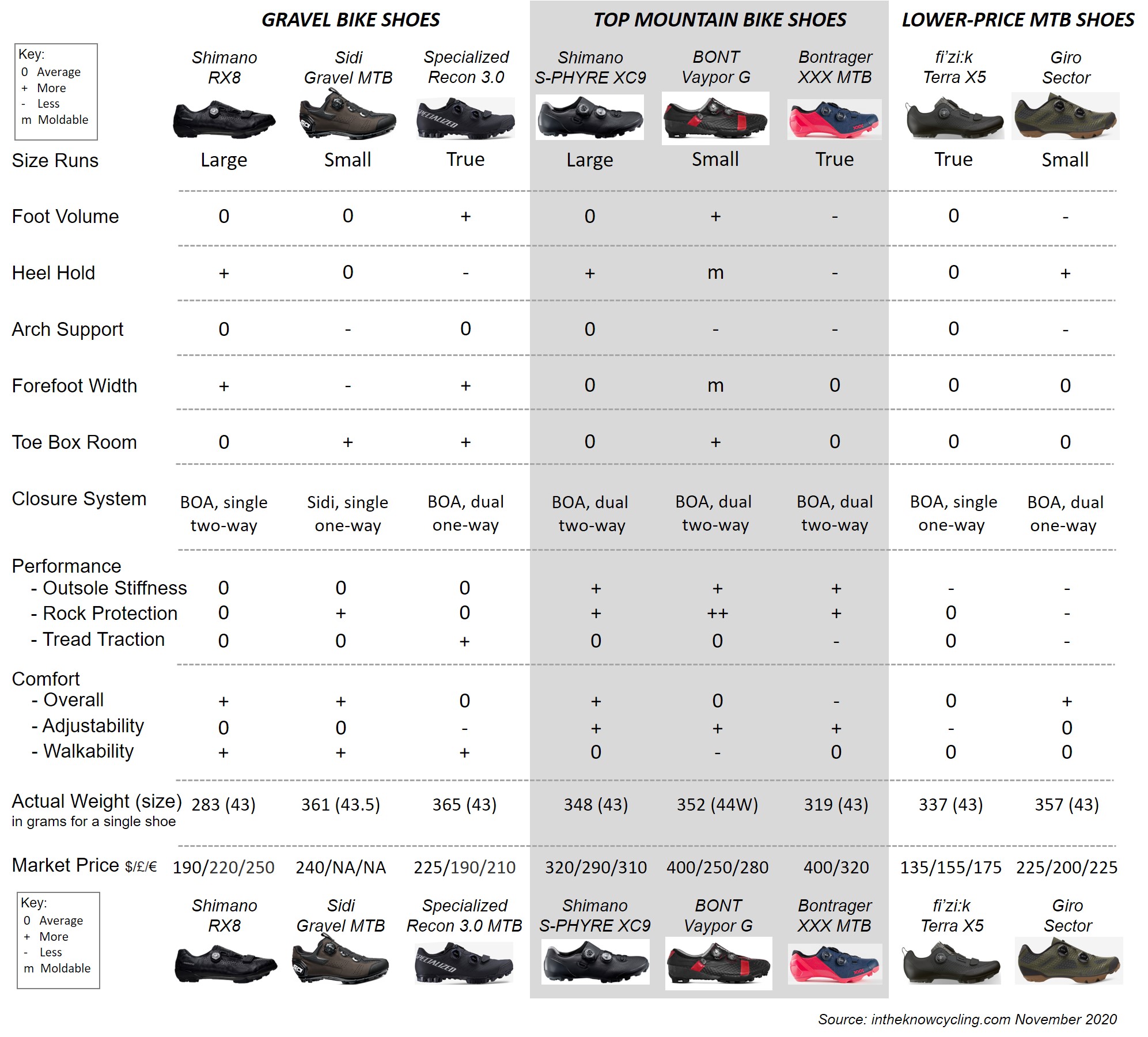
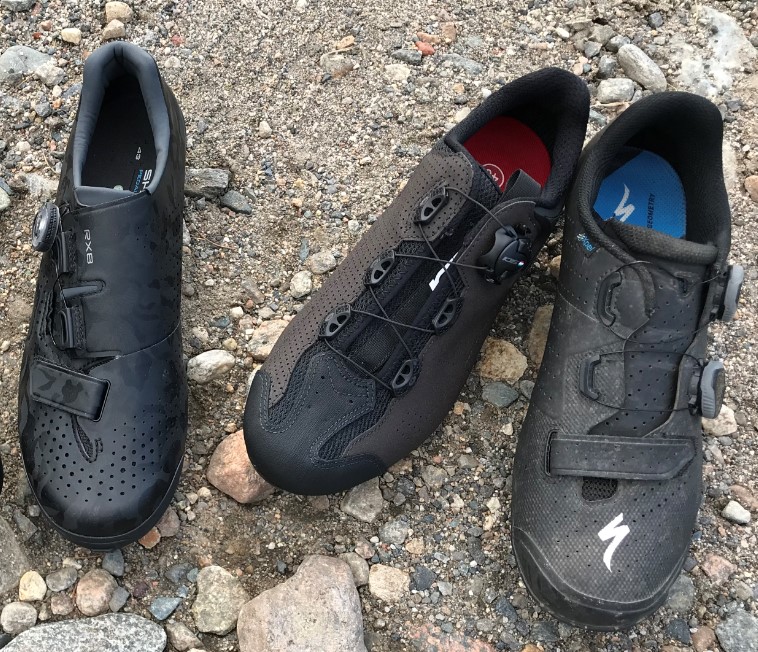
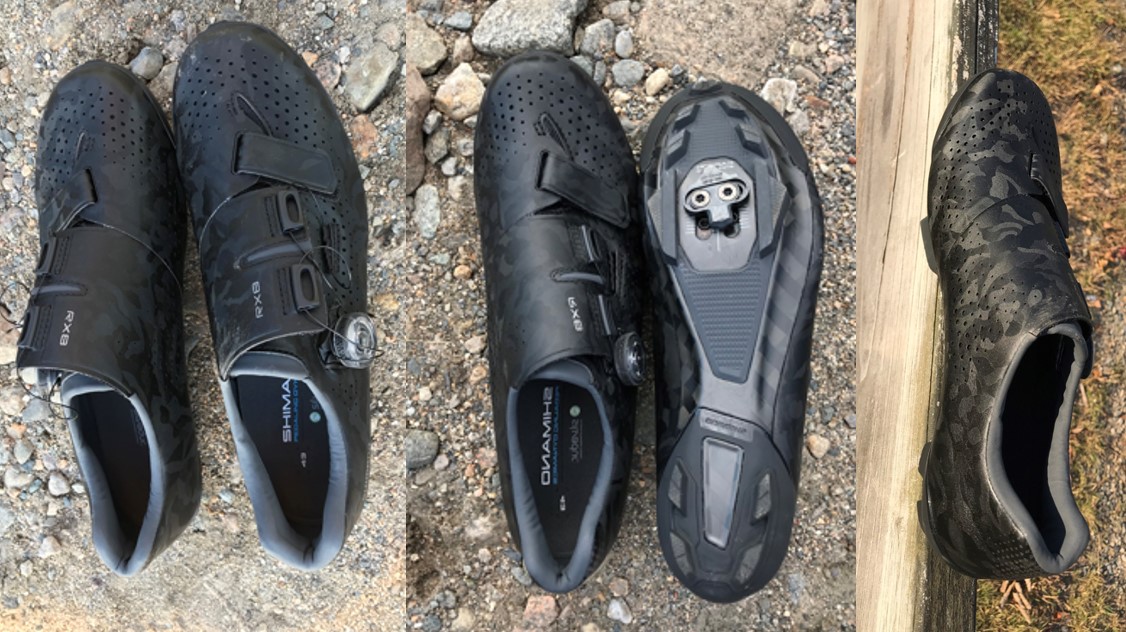

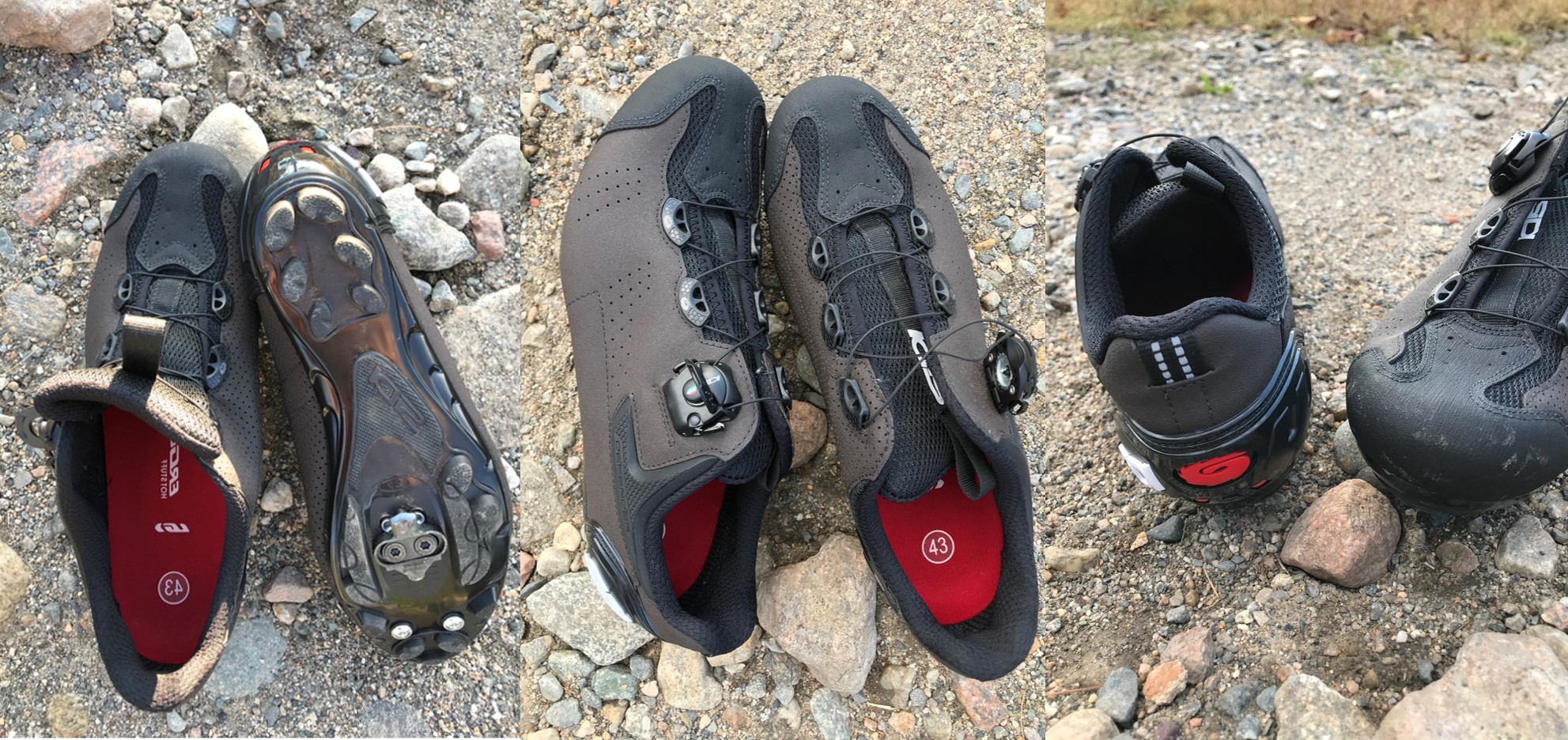
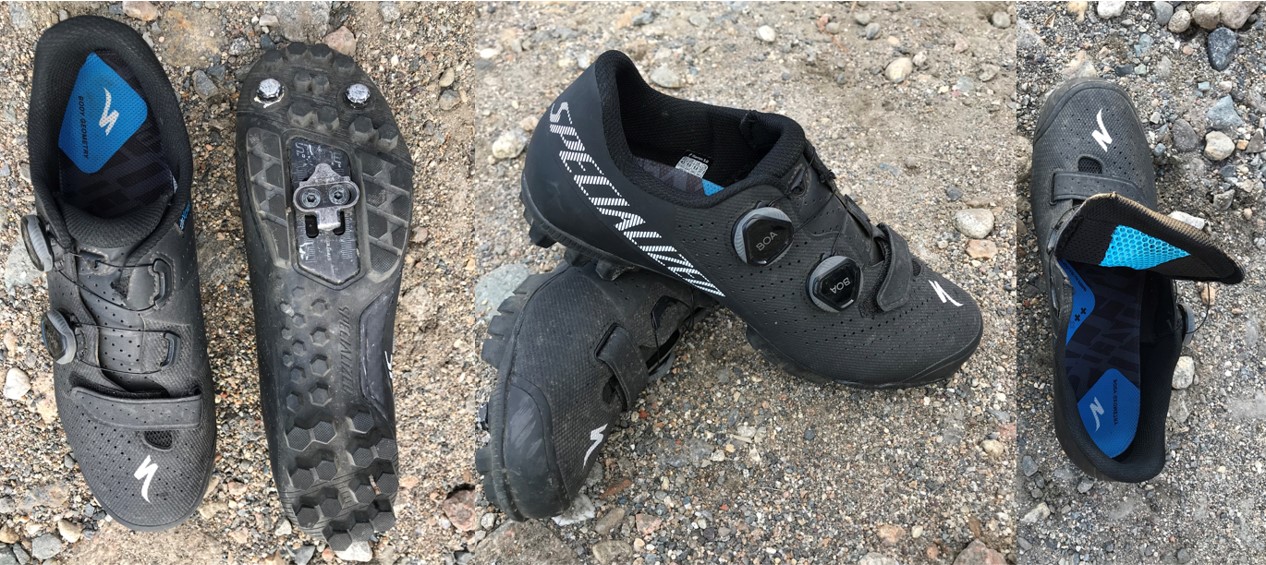
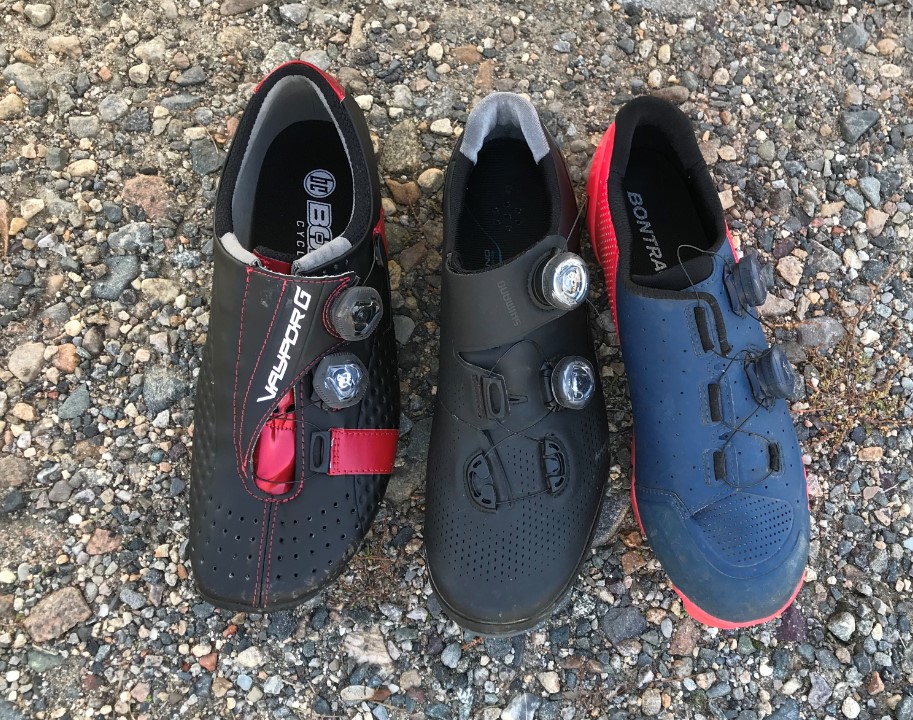

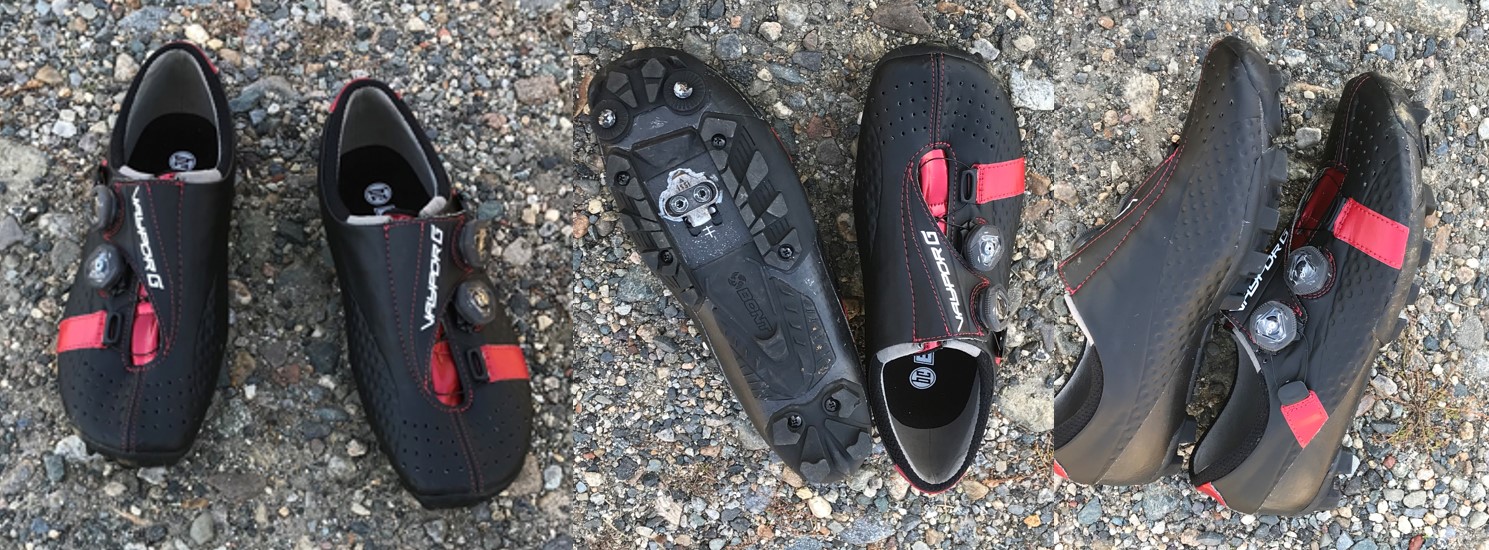
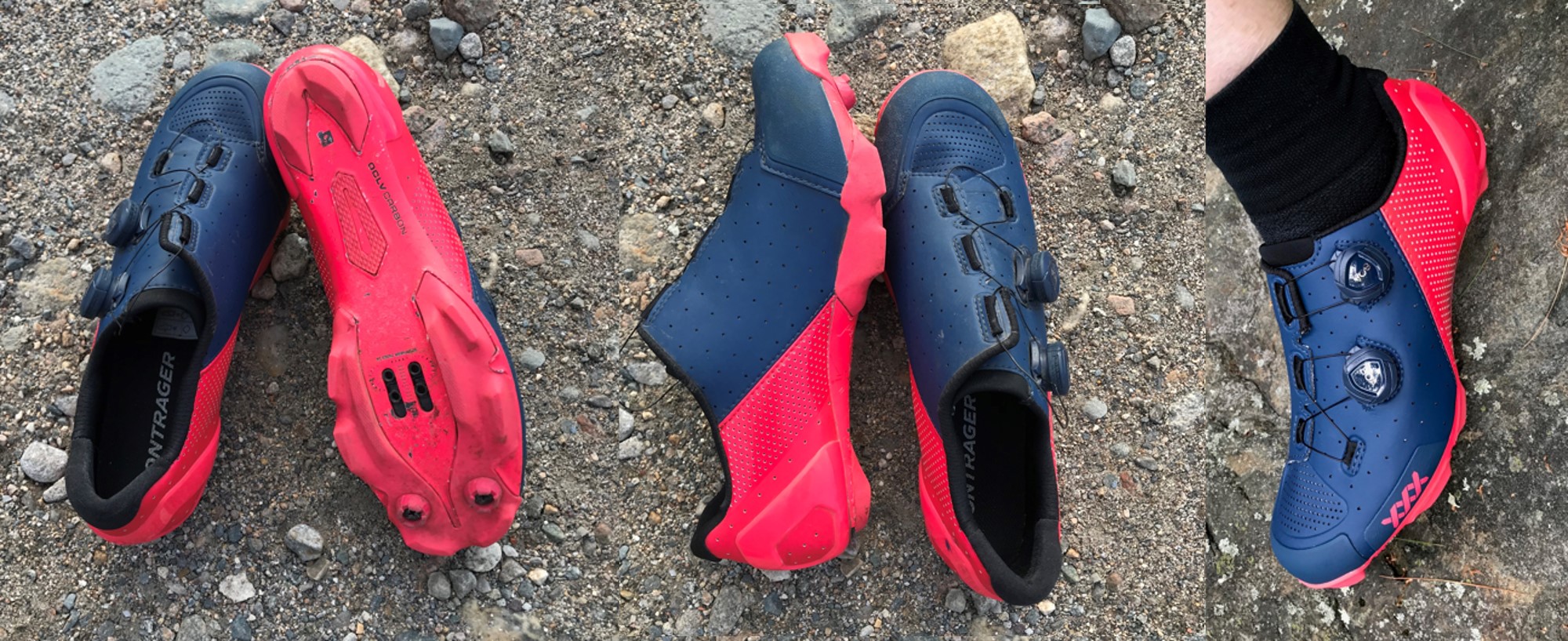
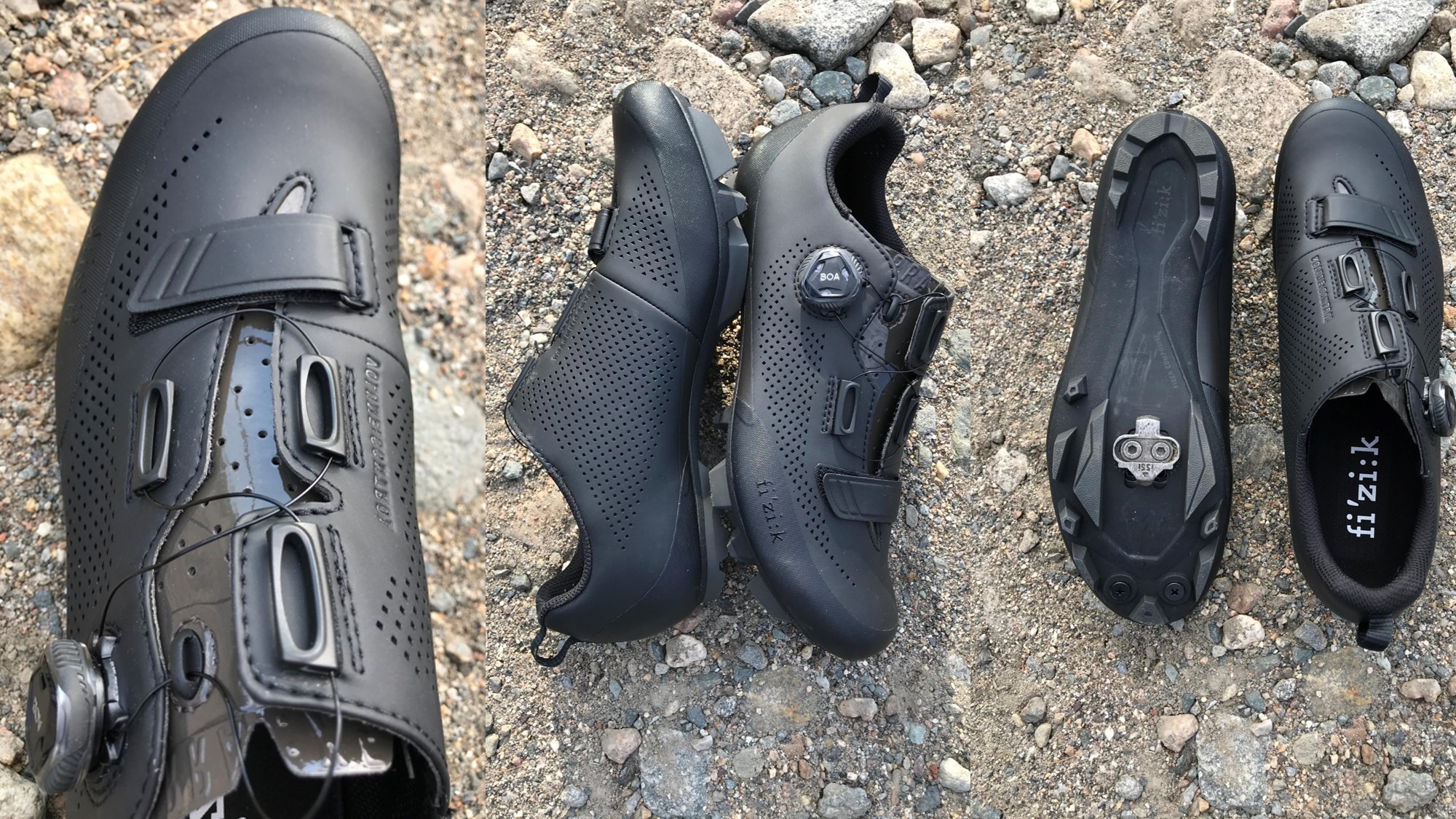
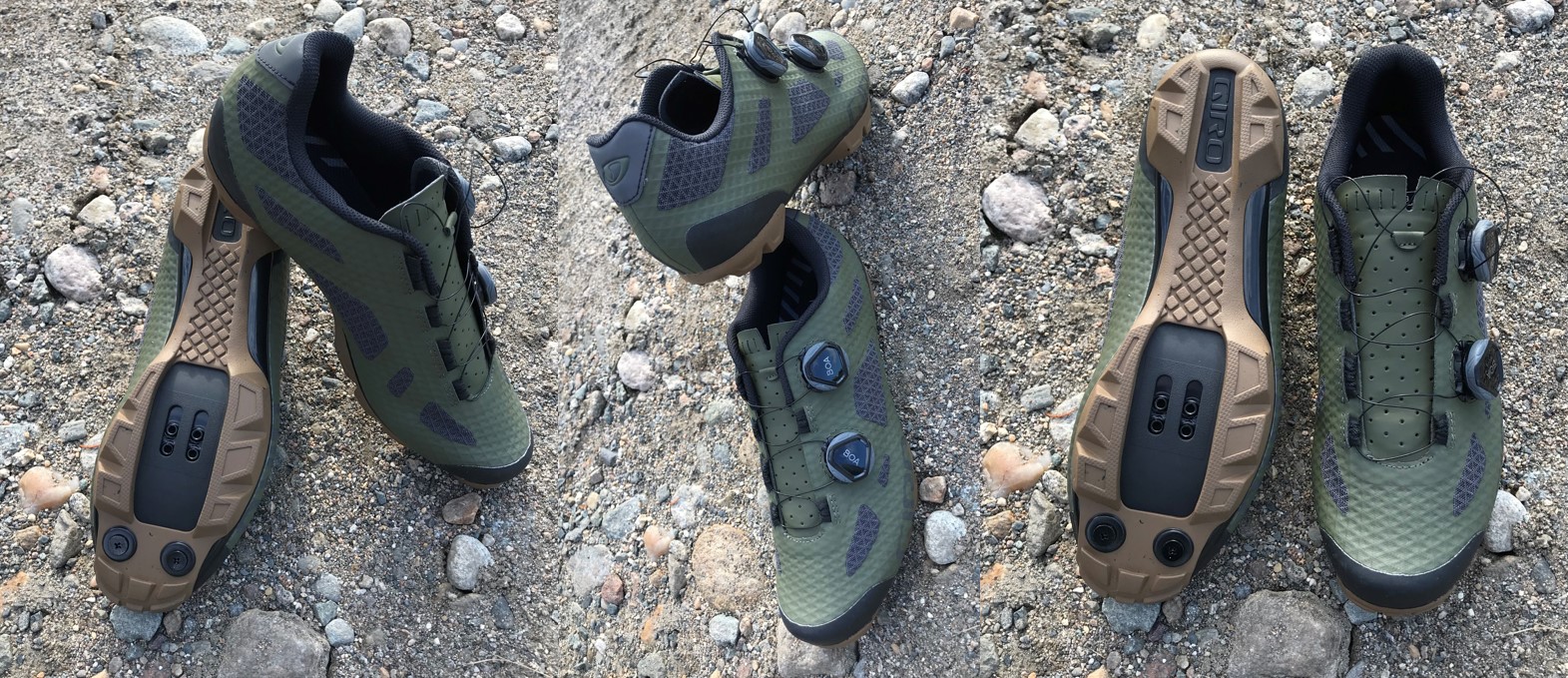
I feel validated by your review as I ride with the RX8’s and have been very pleased with the fit and performance. Any thoughts on reviewing winter shoes since many of us will be spending more time outside in the current paradigm?
Thanks!
Tony, Ha! Glad to oblige. As for the winter shoes, maybe I should just go with your recommendation and save myself the cold toes on underperformers :). Cheers, Steve
So many choices, so little money! 😉 You did leave out my favorite, and imho one of the best…the Lake CX 238.
John, Well we tested and reviewed 8 choices from major, widely distributed brands and recommended 2, both of which are heavily discounted right now. That took a lot of effort and budget from our end and should save fellow groadie enthusiasts a lot of time and money and get them in what we’ve found are great gravel shoes.
As to the Lake CX 238, that’s a road shoe. You must mean the MX 238. I’ll add it to the list to test when we update this review. Steve
For those of us with wide feet – the Lake MX 238 is awesome as it comes in wide. Most of the shoes you reviewed are too narrow for my wide feet.
Larry, Thanks for your report on the Lake shoes. Didn’t get an opportunity to review them. Note that the two shoes I recommend are available in standard width and wide versions as well. Cheers, Steve
Any thoughts on the Shimano XC5s? It appears that the RX8s are now $250 a pair everywhere. 🙁
Julie, Haven’t ridden them but from reviewing the descriptions would think this is more of a comfort MTB shoe than a performance gravel shoe. XC5s outsole is nylon/fiberglass composite vs. carbon and shoe is bit heavier than the RX8. Heel cup, fit, etc. hard to know. Steve
Steve, have you tested the Specialized S-Works Recon?
No. Velo News did a comparison of the Recon and Shimano XC9 which provided characteristics of each. You might want to check it out.
Hi Steve,
What would be your recommendation for someone with a low volume forefoot? And small heel?
I prefer the grip of a gravel/mtb shoe over a road shoe and bought my first pair of clip in shimano rx8 women’s. They don’t have the second boa and I have a lot of space a over my toes and forefoot. The Velcro does nothing to tighten this.
Which ones did you find had decent tread and walkability as well as maybe less volume up front then you’d like? That’s be perfect for me. Width is Normal, but I have no height in my feet.
Cheers
Michelle
Hi Michelle, The trend is toward more room in the toe box. Also MTB and gravel shoes tend to be roomier than road shoes. And while the lack of a second boa usually means a looser forefoot than midfoot and heel, I found that the Shimano RX8 lacing system seemed to tighten the forefoot as much as the midfoot.
All of that said, among the shoes we tested, the Bontrager XXX MTB has less forefoot room and arch than the others and 2 boa. The walkability was average. Take a look at the comparison chart which compares all of these things. It may be that you want to order a couple different pair to try them on. You may also want to try a half size smaller. Steve
Thanks for this excellent review of gravel shoes. Now the summer is approaching, I miss one detail in this review: breathability. MTB shoes tend not to have any ventilation holes especially in the sole, however for the summer I would prefer to have that. And/or breathable materials on the top of the shoe. I have not found any Gravel/MTB shoe fit for warm summer rides. Can you maybe help?
Peter, You can see the ventilation holes in the uppers from the photos but, no, none in the soles. Frankly, I think the nature of MTB and gravel riding that happens as much in the early spring and fall as it does in the summer and the dirt, mud, rocks, and water involved in off-road riding makes ventilation a lower priority and holes in the outsoles a no-no. That said, Nate, Miles and I did much of our testing in August and September including on plenty of hot days and I don’t recall ventilation coming up as an issue. You could always try lighter socks. As gravel becomes more popular we may see shoes with the porous or open upper materials that we see in some road shoes. Steve
Hi, any recomendation for a tight heel cup, low volume mid foot and good toe box? ( i’ve tested 6 pairs of shoes my heels slip while walking or with little effort and i have to tighten the boa a lot)
Yacine, take a look at the Shoe Characteristics and Comparisons chart to find shoes that would best suit your needs. Steve
Thank you very much for this exceptional review. I can’t find the Shimano RX-8s online right now and will go with the SIDI Gravels. I have had great luck with the SIDI brand and your review has me feeling confident about the purchase. Really helpful!
Jamie, Thanks for your kind feedback. both good options. The links I provided above (and that support my ability to provide you with these kinds of reviews) to the Shimano RX-8 give you a full range of size options in stock. Steve
Thanks again for the great detail! I have both the RX8 and XC901 in size 48 wide and much prefer the XC901 as it feels much stiffer, which results in less hots spots and calf pain, and has a wider toe box. I have even moved to an XTR pedal and XC901 setup for my road bike; it just makes sense! The RX8 is okay, but unlike the XC901 I have to completely loosen both the BOA dial and velcro strap to reduce pain: with the XC901 I can ratchet is down nice and snug. Some might describe the XC901 as a race shoe, but I think it’s a great casual shoe as well given the increased comfort.
Hey Steve.
Just wondering if you tested (but didn’t think much of) the Explore Powerweave shoe by Rapha. Been trying on a few off-road shoes and these were incredibly comfortable.
Haven’t purchased anything yet..
Hi Steve. Haven’t tested those. But, you’ve got to ask yourself, does what makes them comfortable take away from how they perform? The carbon outsole doesn’t extend under the heel or toes where a less stiff rubber takes over. Good for walk comfort but less effective for riding performance. Likewise the upper knit improves comfort by letting air out on a hot day but does it also keep rain or mud out when the trail is wet? Steve
I have the Shimano RX-6 Womens gravel shoe that I love. However, I do need more arch support than it came with, as it did not come with options. Can you recommend a replacement insole? I cannot seem to find any information on this from the Shimano website. Thank you.
Susanne, I and many I know use the Specialized Body Geometry insoles. They come in three arch heights. You can get them at a Specialized dealer or online at this link to Performance Bike. Steve